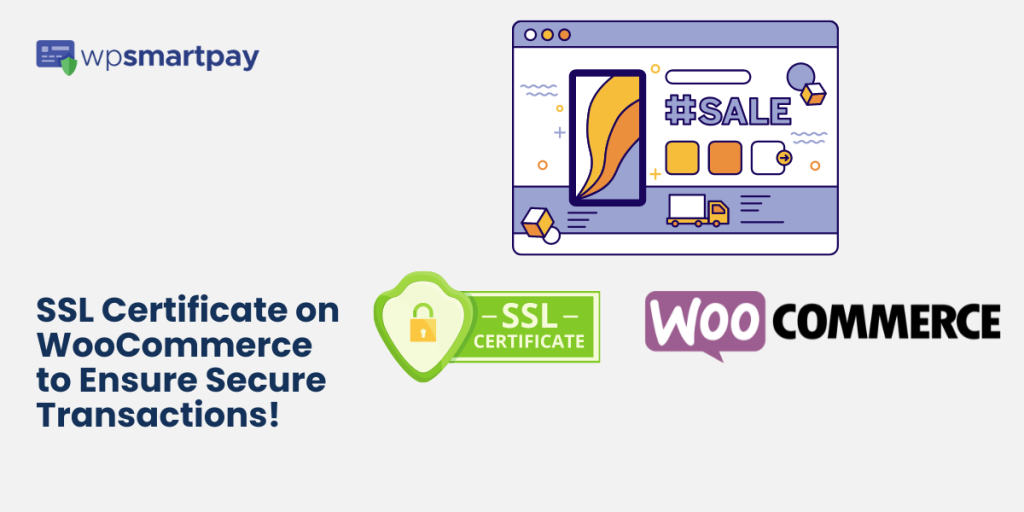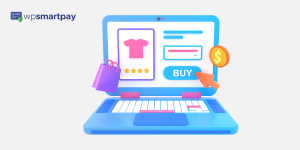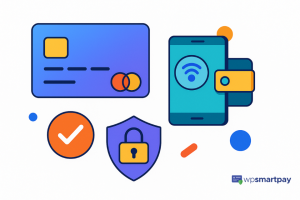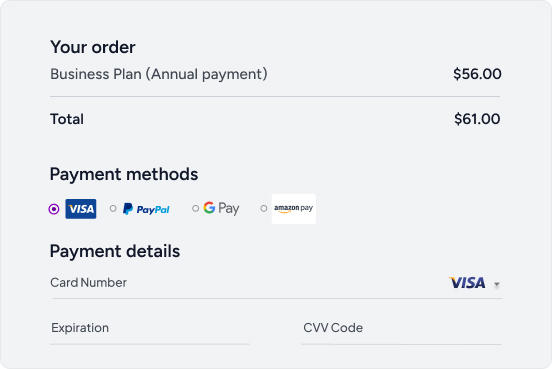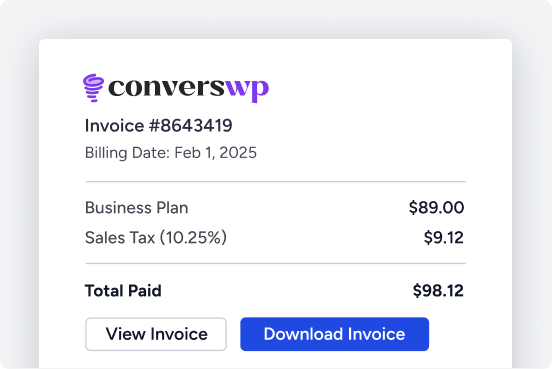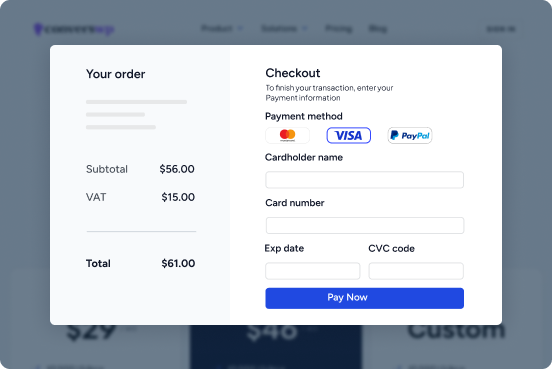If you run an online store with WooCommerce, it’s crucial to prioritize security measures to protect your customers’ sensitive information.
One of the most effective ways to achieve this is by implementing an SSL certificate on your website.
Whether you collect payment information directly or use a third-party payment gateway, it’s essential to ensure that all data collected on your website remains confidential and secure.
In this blog post, we will guide you through the process of adding an SSL certificate to your WooCommerce website to enhance its security and protect your customers’ data.
Let’s have a better understanding of how SSL works and how to integrate it into your online store.
What is SSL?
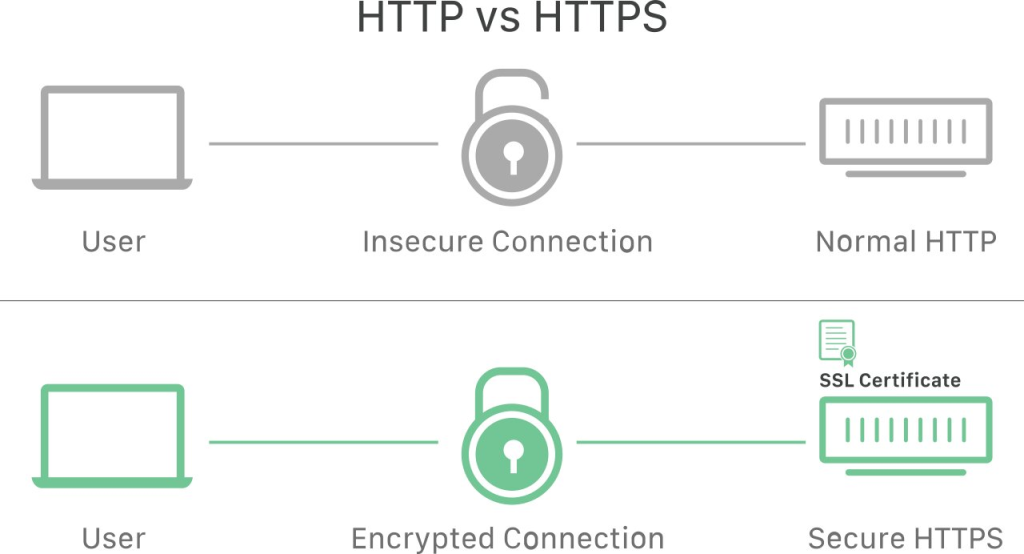
Source: Cloudflare
SSL (Secure Sockets Layer) is a security protocol that creates an encrypted connection between a web server and a user’s web browser. It is used to secure sensitive data that is transmitted over the internet, such as credit card numbers, login credentials, and personal information.
When a user visits a website that has SSL implemented, their web browser establishes a secure connection with the website’s server using SSL encryption. This means that any data that is transmitted between the user’s browser and the website’s server is protected from being intercepted and read by unauthorized parties.
SSL uses a combination of public and private keys to establish a secure connection between the server and the user’s browser. The public key is used to encrypt the data being transmitted, while the private key is used to decrypt the data on the receiving end.
Websites that use SSL have a padlock icon in the web browser's address bar, indicating that the website is secure and the user's data is protected. SSL also helps to establish trust between website owners and their users.
Reasons to add SSL certificate to WooCommerce
SSL is essential not only for WooCommerce but for all websites as it enhances their security. Additionally, having SSL certification provides SEO benefits, as search engines like Google tend to favor websites that are SSL-enabled over those that are not.
It is particularly crucial for websites that engage in eCommerce activities such as WooCommerce. Because they require users to provide personal information to complete transactions. Even if users are redirected to a payment gateway like PayPal, Stripe or Paddle, collecting data like their addresses for deliveries and email addresses for downloads is still necessary.
By installing SSL on your WooCommerce store, you can improve its security and reduce the risk of unauthorized access to data.
Here are some of the reasons why adding an SSL certificate to your WooCommerce website is important:
- Protects sensitive information: SSL encrypts data as it is transmitted between the user’s browser and the website’s server, ensuring that sensitive information like credit card numbers and personal information cannot be intercepted by malicious third parties.
- Builds trust with customers: An SSL certificate helps to establish trust with customers by displaying a padlock icon in the web browser’s address bar, indicating that the website is secure and that their data is protected.
- Compliance with industry standards: Many payment gateways and financial institutions require websites to have SSL certification to process online transactions. Adding an SSL certificate to your WooCommerce website ensures that you are compliant with these industry standards.
- Improved search engine rankings: Google has stated that SSL is a ranking factor in search results, meaning that websites with SSL certification may rank higher in search results than those without.
- Prevents phishing attacks: SSL helps to prevent phishing attacks by ensuring that users are communicating with the intended website and not an imposter site that is attempting to steal their information.
How to add an SSL certificate to WooCommerce
Having an SSL certificate is essential for any eCommerce website, especially if you are running WooCommerce. Adding an SSL certificate to your WooCommerce store can help secure your customers’ data and ensure that their transactions are safe and secure. To enable SSL on your website, you will need to acquire an SSL certificate, which can either be free or paid.
Set up the SSL plugin
Setting up the SSL plugin is an important step to ensure that your website is secure. In this section, we will discuss how to set up an SSL plugin on your website so that you can make sure it is secure.
Free option – Let’s Encrypt
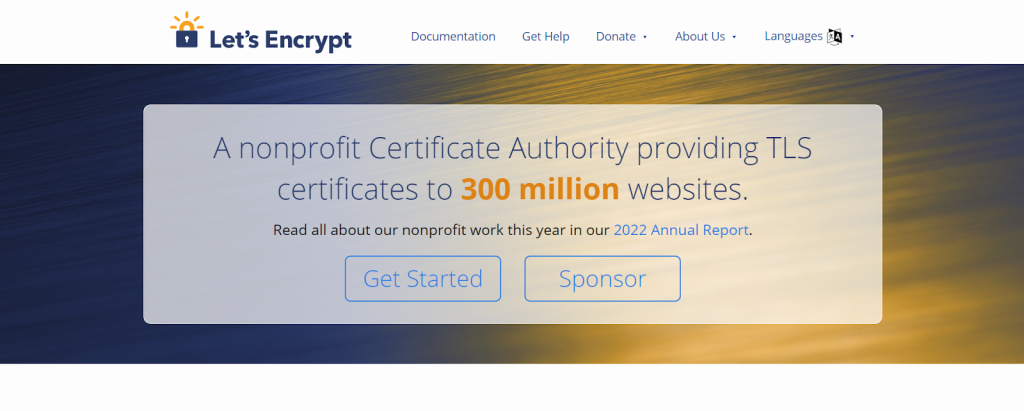
One of the free options available is Let’s Encrypt, which is a certificate authority that provides free SSL certificates to promote a more secure and privacy-focused web. This initiative is highly recommended by WordPress and WooCommerce.
There are two methods to obtain a free SSL from Let’s Encrypt.
Select a Hosting Provider with Free SSL

The first option is to select a hosting company that offers free SSL certificates for WordPress users. Some WooCommerce hosting partners provide this service, and the SSL certificate can be installed with a few clicks or may not require any installation if you purchase a web domain with the hosting package.
If your existing or preferred hosting company does not offer this option. You can ask them if they offer a free SSL from Let’s Encrypt and follow their instructions. Alternatively, if they do not offer this option, you can choose to install the SSL certificate yourself.
Install Yourself
If your hosting company doesn’t offer a click-and-install tool for SSL certificates. You can still use Let’s Encrypt by installing it yourself. However, to do so, you must have a domain name from a domain registrar since Let’s Encrypt SSL certificates are domain-based. Once you have a domain name, you can choose a hosting company and a hosting plan to install the certificate.
Please note that WooCommerce.com does not offer support for the installation and setup of an SSL certificate.
Paid SSL Options
There are different SSL certificate options available for purchase from various providers that can be installed on your website or store. Additionally, your hosting company may offer SSL certificates that they can assist with installing on either a new or already existing website or store.
Activate the SSL certificate
Once the SSL certificate has been established on your server, you can access your store securely using the URL https://yoursite.com. Your web browser will indicate that the site is secure by displaying a ‘lock’ icon in the address bar.

For new websites/stores
If you have recently installed an SSL certificate on your WordPress/WooCommerce website or store, it is important to update the URLs to reflect the secure connection. Navigate to Settings > General and modify both the WordPress Address and Site Address to include “https://”.
Save the changes to ensure that the website is now using a secure connection.
For existing websites/stores
For existing websites or stores that have already been indexed using “http://”, it is important to redirect visitors and customers to the new secure URL.
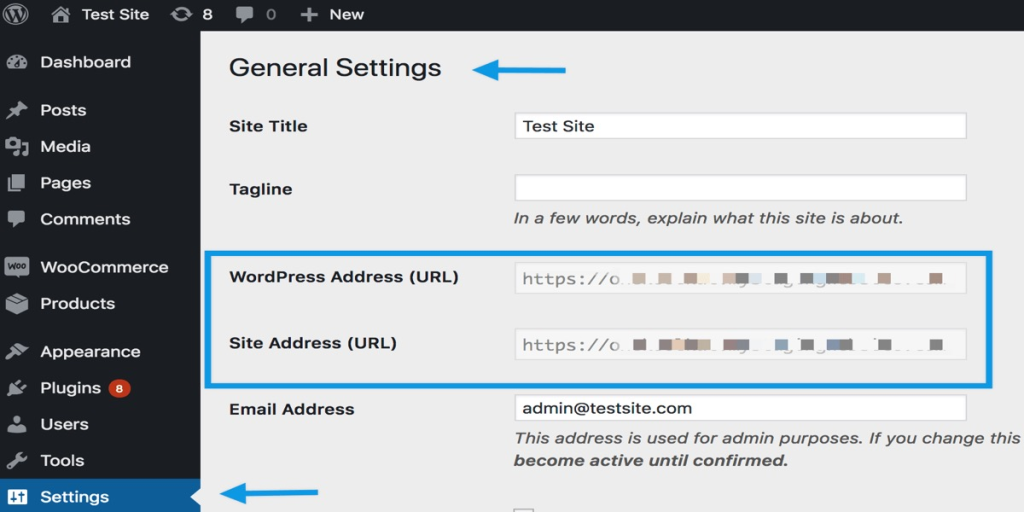
Important tips:
Make changes to the internal links in your content using Search and Replace. Update the settings of Google Analytics if you are using it. Verify the implementation of SSL using SSL Server Test and fix any problems that arise. Conduct an SSL Check to identify any non-secure links or content.
WooCommerce Force SSL Setting
It is strongly recommended to use HTTPS throughout your entire WooCommerce website or store, not just on the checkout page, before enabling the Force SSL setting. However, if you choose to only enable SSL on the checkout page, please note that the Force SSL setting will not be available if your site’s URL is already HTTPS.
This setting can be found at WooCommerce > Settings > Checkout > Checkout Options in WooCommerce versions 3.3 and below, or at WooCommerce > Settings > Advanced in WooCommerce version 3.4+. Once enabled, the Force SSL setting ensures that specific pages are only displayed over HTTPS.
These pages are:
- Checkout
- Checkout > Pay (endpoint)
- My Account
Troubleshooting WooCommerce SSL
SSL (Secure Sockets Layer) is a security protocol that encrypts data sent between a website and its visitors. It is essential for any e-commerce website, such as those running on the popular WooCommerce platform. However, there are times when troubleshooting WooCommerce SSL can become an issue.
Let’s checkout the common problems associated with WooCommerce SSL, and how you’ll be able to quickly resolve any SSL-related issues and get back to running your business without a hitch.
Error pages over HTTPS
If you are encountering error pages over HTTPS, it could be a sign of an issue with your certificate setup. We recommend that you reach out to your hosting provider to investigate and resolve the issue.
Non-secure Content Error Warnings
If you get a “Non-secure Content” error message on a website that has SSL installed. It’s likely that some of the website’s content, like images or media, is not being delivered securely. Because of a mixed content problem or because some of the scripts are being loaded over HTTP.
There are a few things you can do to solve this problem:
- First, open the source code of the page where the error is happening and look for “src=http//” to find out where the problem is coming from.
- Make sure that SSL is used across your whole site and not just in the settings.
- If the problem is caused by insecurely loaded scripts, try turning off any plugins that might be causing it.
- If the problem is caused by links and media added to the content, it may be because they were added before SSL was used. Try searching your database for http://yoursite.com and replacing it with https://.
- Lastly, if external links to media are the problem, make sure that all content, including media pulled in from other sites, is hosted on a secure source.
Redirect Loops
WooCommerce uses the is_ssl() function of WordPress to redirect non-secure pages. However, a redirect loop may occur in the following situations:
- If you have another SSL plugin like Easy HTTPS Redirection installed, which attempts to un-force the secure URL. To resolve this issue, you can try removing the other plugin or disabling the Force SSL setting.
- If your host implements SSL by proxy, which makes it difficult to detect https. In such cases, you can refer to SSL by Proxy Problems to fix the issue.
SSL Connection Related Error
This error happens when the browser can’t make a secure connection with the server. Several bad things could cause this to happen.
Expired SSL Certificates
If your SSL certificate has run out, you may get an SSL error message. To avoid this problem, you should either use a service that renews your certificate automatically or set a reminder to renew it before it runs out.
If your site has a custom SSL, you should keep track of when the certificate needs to be renewed so that your site doesn’t go down.
Wrapping Up
SSL (Secure Sockets Layer) is a security protocol that allows sensitive data to be transmitted securely between two devices, whether over the Internet or a network. An SSL certificate verifies the authenticity of a website and the identity of its owner.
For WooCommerce site owners, adding an SSL certificate is crucial to protect customer data, build trust, and boost SEO. By encrypting data and displaying the padlock icon in the web browser’s address bar, customers can feel confident that their data is secure.
Additionally, many payment gateways and financial institutions require SSL certification, so not having one could result in lost sales.
In conclusion, adding an SSL certificate to your WooCommerce website is a fundamental step in securing customer data and building trust. It not only benefits your customers. But it also benefits your business by ensuring compliance with industry standards and improving your website’s search engine rankings.
Frequently Asked Questions about WooCommerce SSL
SSL is an acronym for Secure Sockets Layer, a protocol that encrypts data sent over the internet. HTTPS stands for Hypertext Transfer Protocol Secure, which combines HTTP with SSL/TLS encryption. Both protocols are designed to protect online stores from cyber threats such as man-in-the-middle attacks, data theft, and other malicious activities.
SSL ensures that all data sent between a server and a browser is encrypted. While HTTPS is an upgrade of HTTP that adds an additional layer of security on top of standard HTTP. With these two protocols, your customers can be assured their personal data is secure when shopping with your store.
SSL is the technology that protects your website, and it needs an SSL certificate to be set up. HTTPS is the protocol that visitors use to get to your website. In reality, though, SSL and HTTPS mean pretty much the same thing.
If your website has an SSL certificate, visitors will see “https://” in the address bar of their browser, which shows that the website is safe.
A dedicated IP address is a set of numbers that is used to identify a server on the Internet and is not shared with other sites. If a website is hosted on a shared server, it won’t have a dedicated IP address unless it’s bought separately or comes with the hosting package.
The answer to the question is that a dedicated IP address is not necessary to run SSL on a WooCommerce store.
Payment Card Industry (PCI) compliance is about how payment card information is stored and sent over the Internet. Even though SSL is a key part of PCI compliance, it is not the only thing that needs to be done. PCI compliance involves security assessments and server scans as well.
It is best to link to a payment gateway for WooCommerce sites that accept credit card payments. In this way, the security measures put in place by the payment gateway provider help both the website owner and the customers.
When implementing SSL on a WordPress Multisite site with WooCommerce, the SSL approach depends on whether subdomains or subdirectories are used and whether domain mapping is used. If using a mapped domain, an SSL certificate must be installed for that domain.
A single SSL certificate will cover the entire network if using subdirectories. However, if using subdomains, a wildcard SSL certificate or separate SSL certificates for each subdomain is required since each subdomain is treated as a separate domain.

